October 26 – February 27, 2022
About:
Moving away from the traditional portrait bust or painting, the artists in this exhibition have found ways to convey details of personal identity, biographical narratives, and self-expression. Rather than seeking to depict the outward appearance of their subjects, these artists have found ways to express the inner lives and physical form of their sitters (and sometimes themselves) through other means. In the works in this exhibition, all of which are drawn from the Samek’s collection, artists play with how to represent the bodies of their subjects, and how to represent emotions, identities, and relationships by depicting bodies differently, or without depicting any bodies at all.
Related Events:
Portrait Workshop at the Samek Art Museum
Saturday, January 29, 9 a.m. – 12 p.m.
Samek Art Museum Downtown Gallery, 416 Market St. Lewisburg, PA, 17837
Come learn to draw portraits at this workshop led by John McKaig, Instructor of Drawing at Bloomsburg University. This event is in conjunction with our Downtown Gallery exhibition Nobodies: Identity, Selfhood, and Expression Beyond Portraiture. This workshop is FREE and OPEN to anyone 12+ years of age.
Curatorial Talk with Carly Boxer
Thursday, February 10, 7 p.m.
Iron Front Event, 434 Market St. #301, Lewisburg, PA 17837
Dr. Carly Boxer, Carney Postdoctoral Fellow in Medieval Art and Architecture at Rice University, will speak about the exhibition Nobodies: Identity, Selfhood, and Expression Beyond Portraiture, which she guest curated from the Samek Art Museum’s collection. A reception will follow the talk next door at the Samek’s Downtown Gallery.
Curatorial Text:
Nobodies: Identity, Selfhood, and Expression Beyond Portraiture
The art historian Richard Brilliant provides a broad definition of portraiture, one that seems to encompass how we as viewers think of portraits: “portraits are art works, intentionally made of living or once living people by artists, in a variety of media, and for an audience.” But when we think of portraits, we expect that the way a sitter looks in the image matches the way that person actually looks. This exhibition explores what it means for a work of art to be “made of” someone. By this rubric, a portrait does not need to portray its subject’s face, or even their body. The works in this exhibition call into question just what makes a portrait a portrait, and propose diverse ways of portraying identity, selfhood, and emotive or creative expression.
Moving away from the traditional portrait bust or painting, artists have found ways to convey details of personal identity, physical presence, biographical narrative, and expressive individuality. Rather than seeking to depicting the outward appearance of their subjects, these artists have found ways to express the inner lives and physical form of their sitters (and sometimes themselves) through other means. In the works in this exhibition, all of which are drawn from the Samek Art Museum’s collection, artists play with how to represent the bodies of their subjects, and how to represent emotions, identities, and relationships by depicting bodies differently, or without depicting any bodies at all.
– Curated by Carly Boxer
Exhibited Works:
Domenico Tintoretto (attributed to),
Portrait of a Young Man in Black, 1579 – 1581,
Oil on canvas,
Gift of the Samuel H. Kress Foundation,
1961.K.1068
Domenico Tintoretto’s Portrait of a Young Man in Black displays all the characteristics of a typical portrait. We see the sitter shown in profile to reveal facial features, set against a dark background that eliminates any distractions from his fixed gaze. In Tintoretto’s portrait, the unknown subject’s identity shines through in his thoughtful features, but he remains nameless – despite his lushly-painted garments, he’s a nobody. A traditional portrait in one sense, Tintoretto’s Young Man nevertheless complicates just how portraiture is understood to depict its subjects when those subjects remain anonymous.
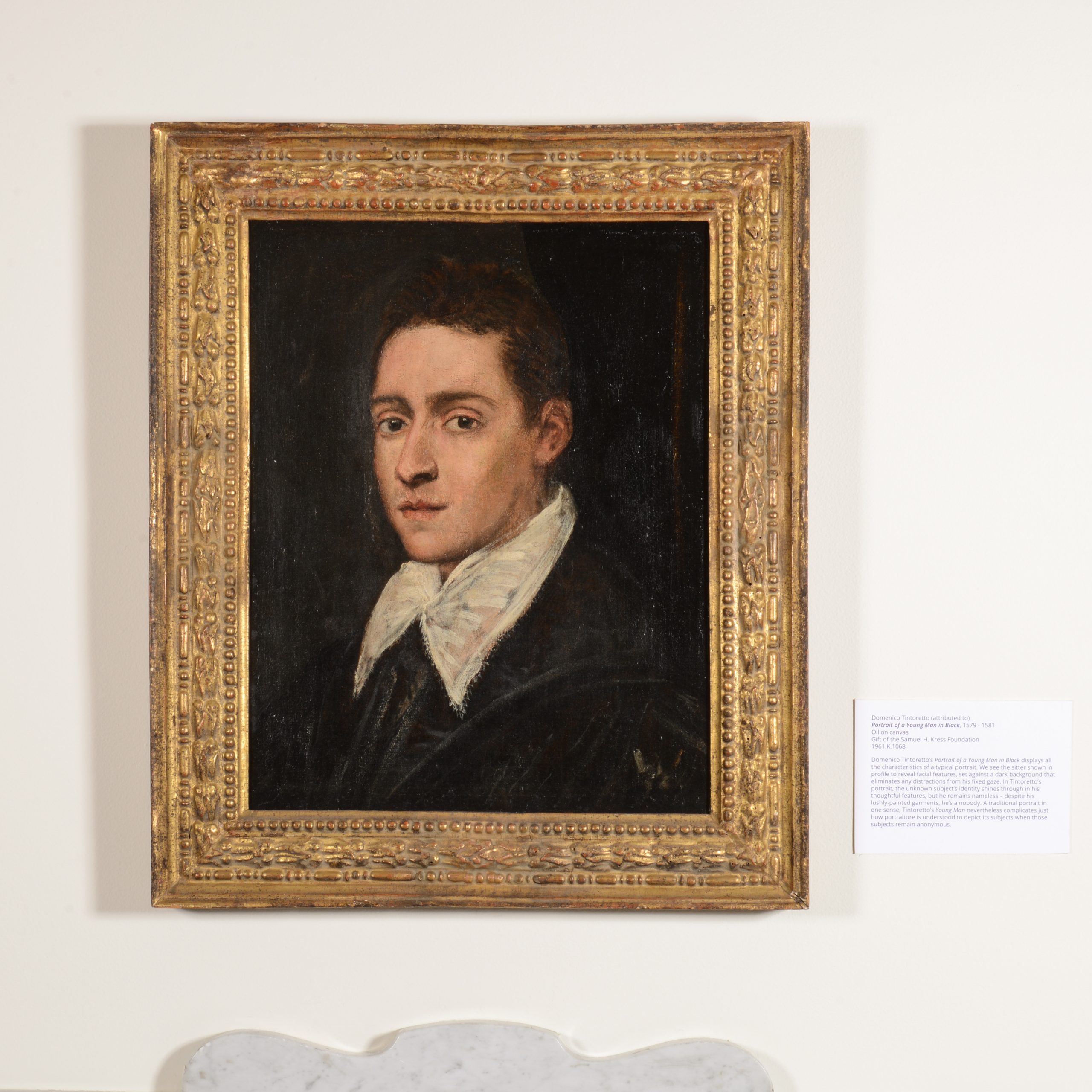
Alice Neel,
Benny Andrews, 1978,
Lithograph on paper,
University Purchase,
2007.7
Throughout her 60+ year career, Alice Neel returned repeatedly to friends and family members, fellow artists and social activists as the subjects of her paintings. Neel injected the figures she painted with vivacity through her use of color and proportion, capturing her sitters’ attitudes, their backgrounds, and their inner lives. In this portrait of artist and activist Benny Andrews, Neel’s minimal composition produce a sense of intimacy. A traditional portrait in many senses, the print communicates something of the character of its sitter, but still leaves room for the viewer to make their own inferences about the sitter’s identity.
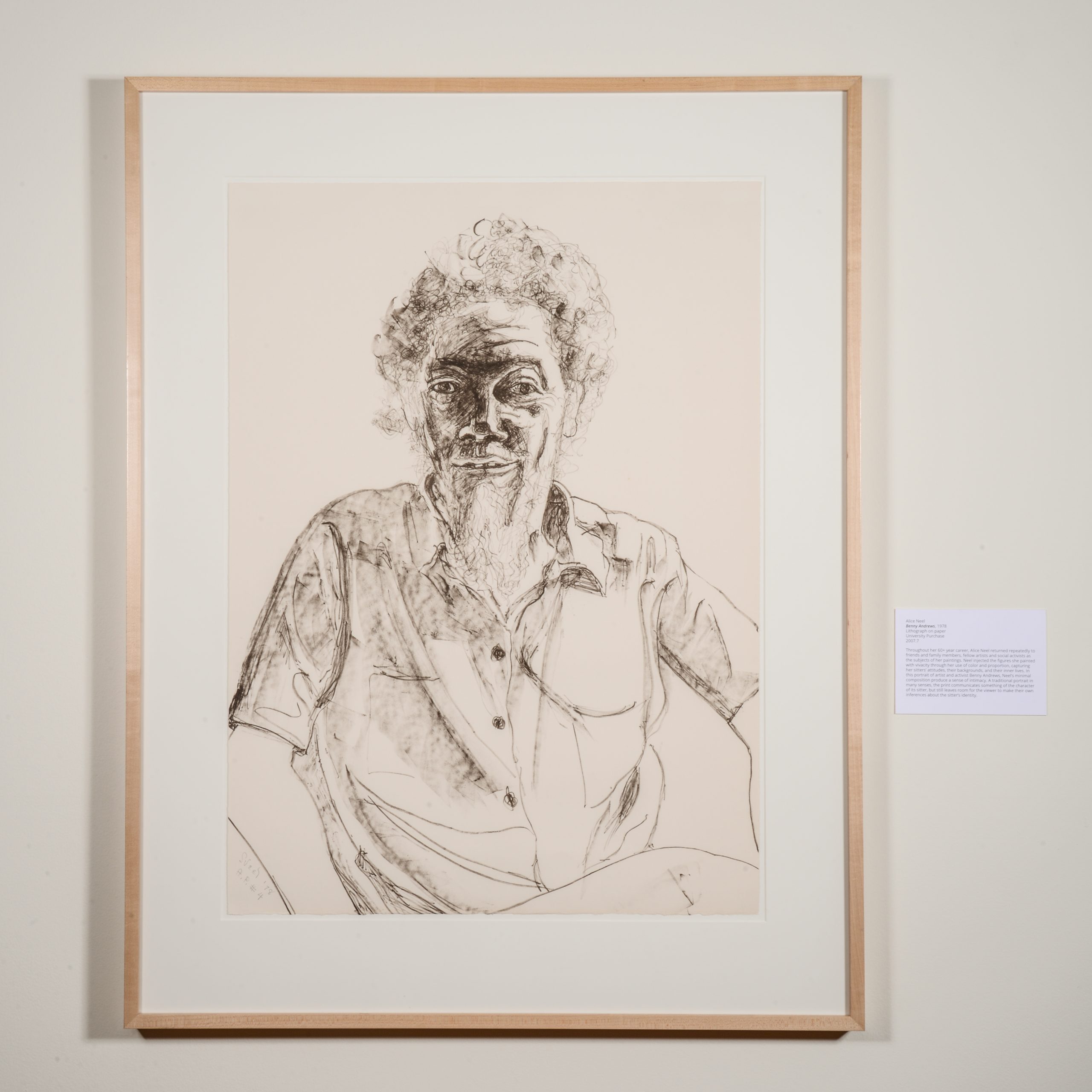
Egyptian,
Seated Scribe Fragment, ca. 1295-1895 BCE,
Sandstone,
Gift of Dr. Bart DeGregorio,
2008.94
This sculpture of a seated scribe, made in Middle Kingdom Egypt under the XIIIth dynasty, shows a now-unidentifiable subject. Defaced and damaged by time, only the sitter’s sandstone hands are recognizable. What could be a portrait instead appears anonymous. An inscription at the sculpture’s base, however, offers some sense of the scribe’s identity, naming the “son of Imy, scribe of the Pharaoh Nubkhaure.” Perhaps a funerary gift or a ritual donation, the seated figure ensures good fortune for the man named in text, even if his image is now lost.
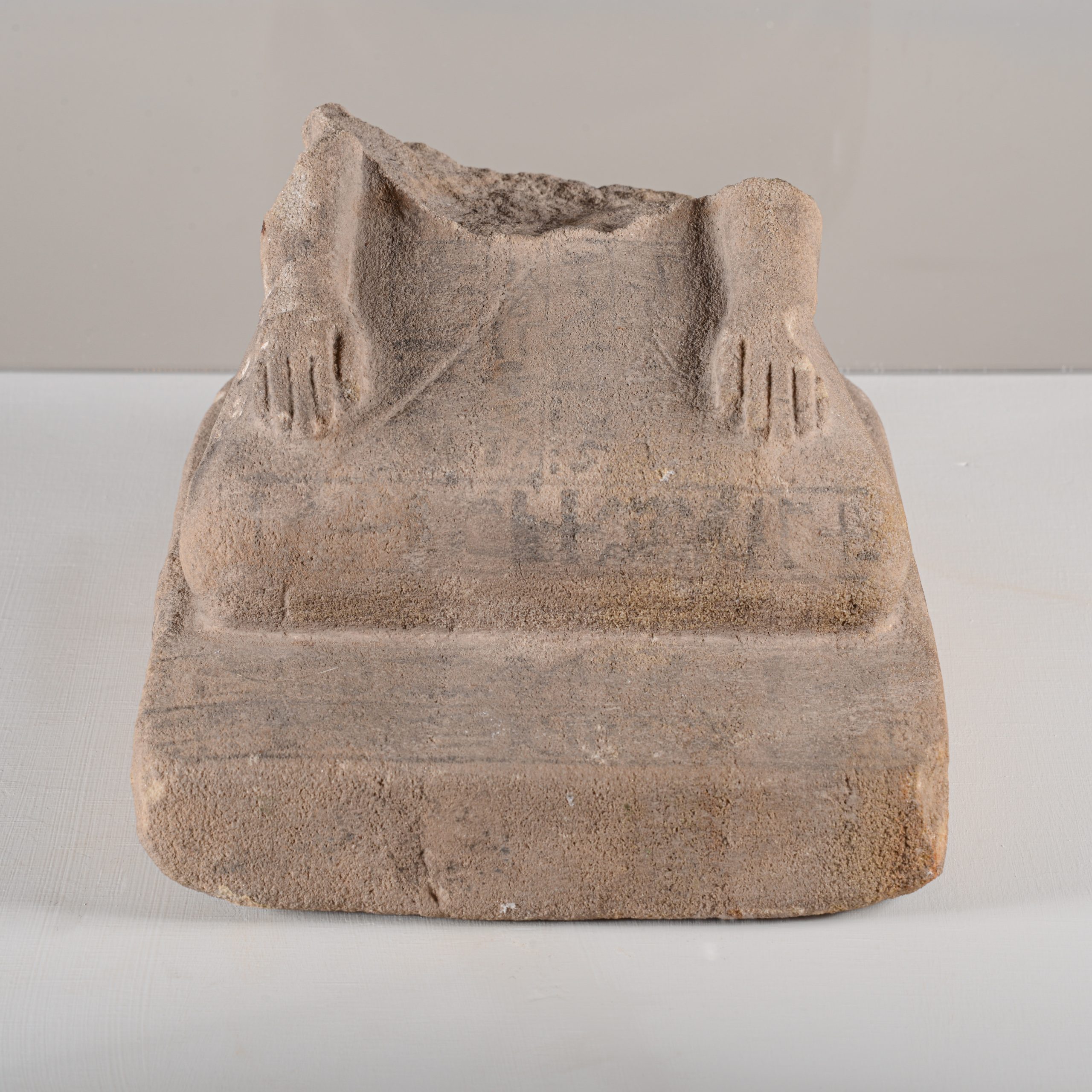
Díaz Lewis,
Unfamiliar Setting 8, 2018,
Embossed lint comprised of hair, skin cells, dust and clothing fibers in a custom acrylic frame,
Courtesy of the artists, Aspect/Ratio Gallery,
2018.1
A collaboration between Alejandro Figueredo Díaz-Perera and Cara Megan Lewis, Díaz Lewis find unexpected ways to inject traces of personal identity into their socially-charged works. While at Bucknell as the University’s first Ekard Artist-in-residence, Díaz Lewis collected lint from campus laundry facilities; the recombined particles of skin, hair, and cloth make up Unfamiliar Setting 8. This sculpture separates the idea of making an image of someone from the expectation that the image look like someone.

Ray Kakuo Yoshida,
See, 1995,
Color lithograph on paper,
University Purchase with Patron Trade or Sell Funds,
2008.54
Ray Yoshida was closely involved with the Chicago Imagists, a group of artists working in the 1970s who drew inspiration from Surrealism but inflected their work with vulgar, fantastical elements. Here, Yoshida offers a deconstruction of a comic book page, with geometrical elements and occasional speech bubbles floating free from the constraints of a superhero narrative or its characters. In addition to reorganizing the cells of the story, Yoshida has excised the faces and bodies of its characters, leaving hair detached from heads and a single spoken word, “SEE?,” without a mouth.
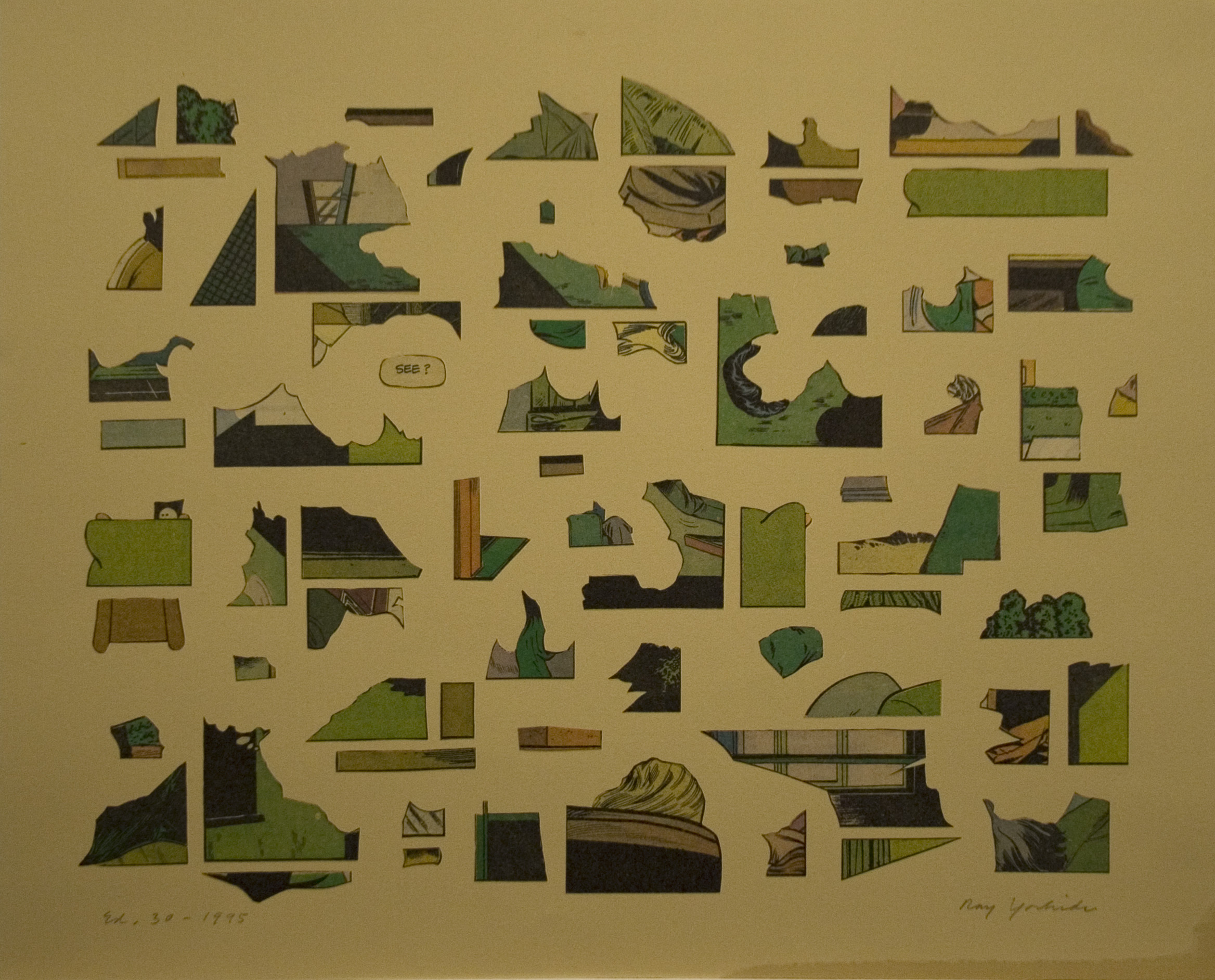
Miriam Schapiro,
Children of Paradise, 1984,
Multicolor lithograph with collage on paper,
Gift of Mr. And Mrs. Saul Putterman,
1984.38.3
In Schapiro’s print, materials and background weave together creating the effect that the faceless subjects cannot be separated from their environment. Nevertheless, the Paradise evoked in Schapiro’s title depends on the identities of these two absent figures. In vibrant, dynamic swarths of color, Schapiro calls to mind the joy of the outdoors and the innocence of childhood, making those sentiments available to viewers who might see themselves in the subjects’ places.

Gabrielle Bakker,
Touching Gloves, 1990,
Oil on board,
Gift from private collection, New York,
2004.4.1
Gabrielle Bakker’s painting Touching Gloves evokes the presence of its subjects precisely because of their absence. Two empty gloves set against contrasting color backgrounds lightly graze each other, gesturing like hands reaching toward each other. Their different colors and the liveliness of their movement suggest that these two gloves belong to two different people, reaching out to grasp each other’s hands. Without any figures wearing the gloves, the sense of longing and loneliness expressed by their gesture becomes stronger.
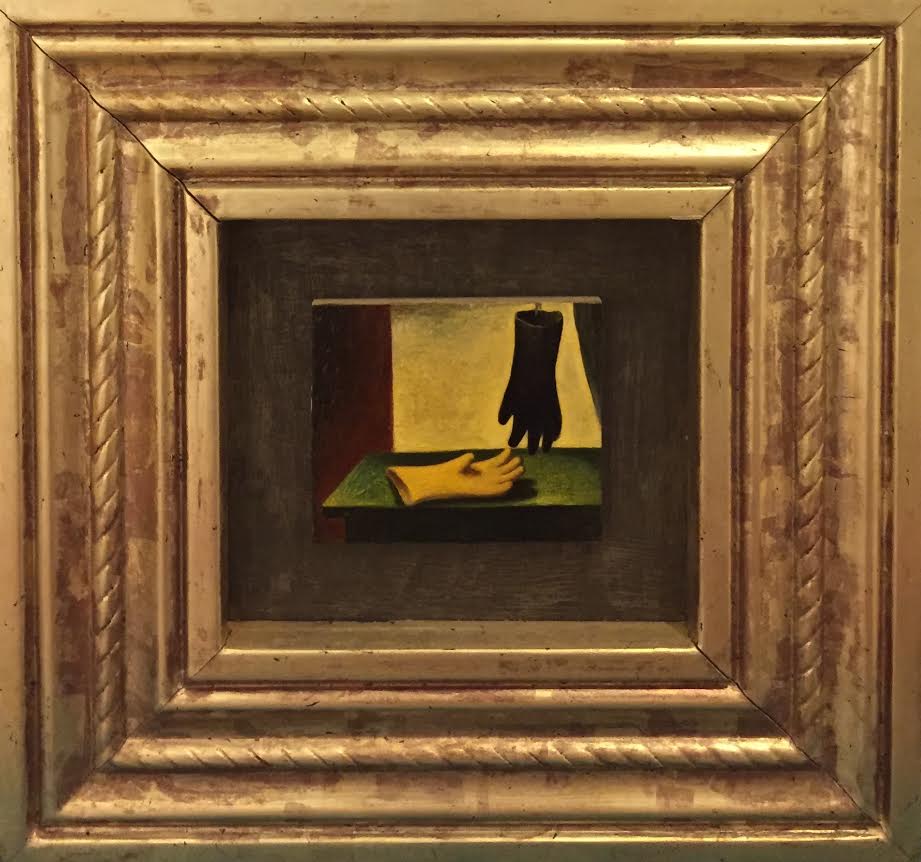
Gerhard Richter,
Schattenbild I, 1968,
Collotype in colors on white cardboard,
University Purchase,
2007.9
One of a series of paintings and prints showing silhouettes of seemingly lifeless objects, Richter’s Schattenbild I (or Shadow Picture I) illustrates the shadow cast by the lone white rectangular prism in the foreground. While inanimate, both the prism and its shadow look eerily human; the rectangle’s position front and center and its lean and tall proportions create the impression that the image is a portrait rather than an abstract composition.
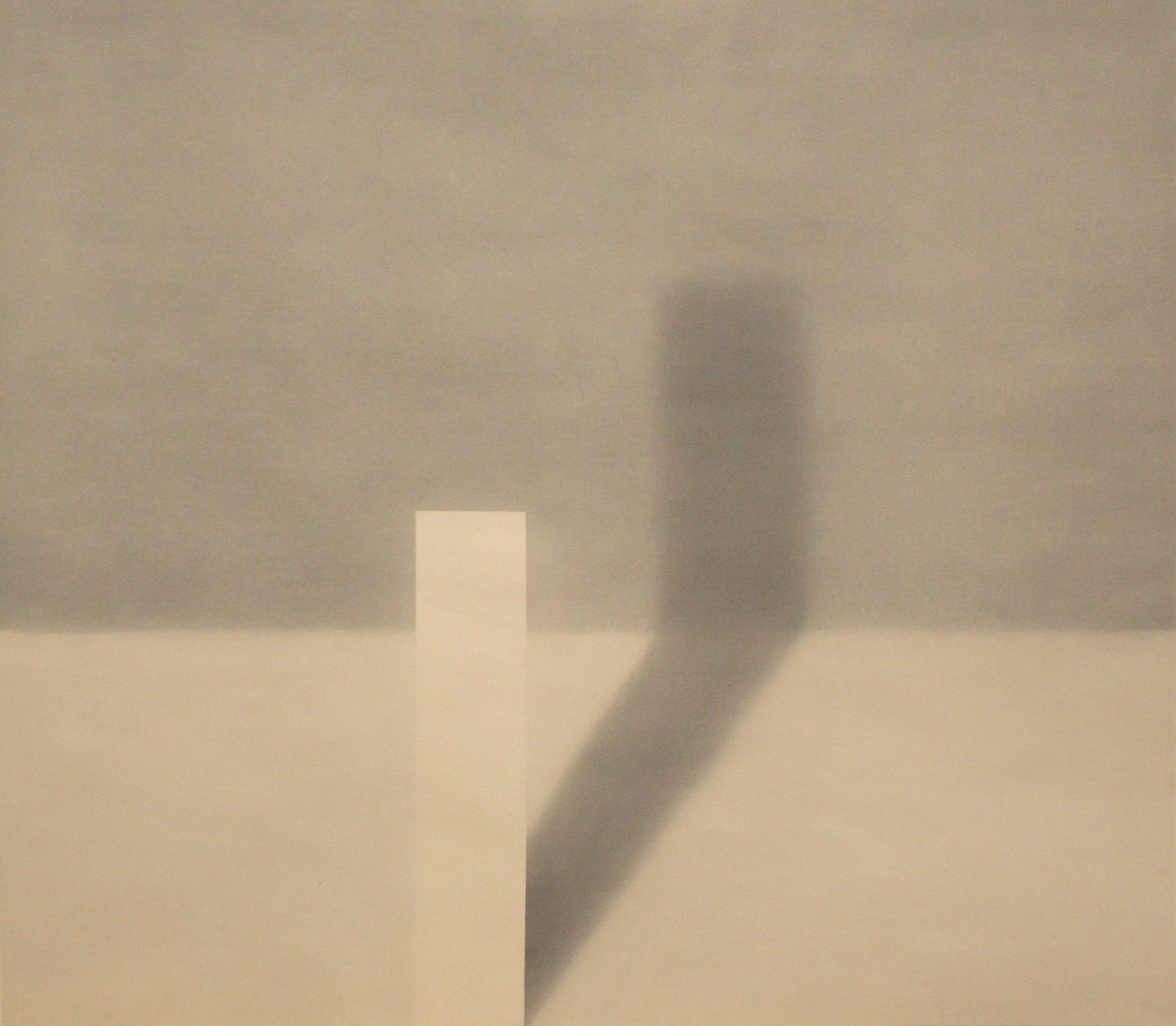
Alen MacWeeney,
Parlor Chaise, Village House, Co. Kerry, 2015,
Archival Pigment Print,
Chip and Donna Ott,
2017.6.2
No human figures populate Alen MacWeeney’s photograph of a parlor in County Kerry, Ireland. Two black and white portraits and a large print in a reflective frame hang on the parlor’s stained wallpaper, and a third, unframed, portrait leans against the wall. MacWeeney’s photo is far from a portrait, but hints at a particular person inhabiting the space. Light coming in from the facing windows gives some indication of the room beyond the frame, but the photographer, whose image we would expect on the shiny glass, is absent.
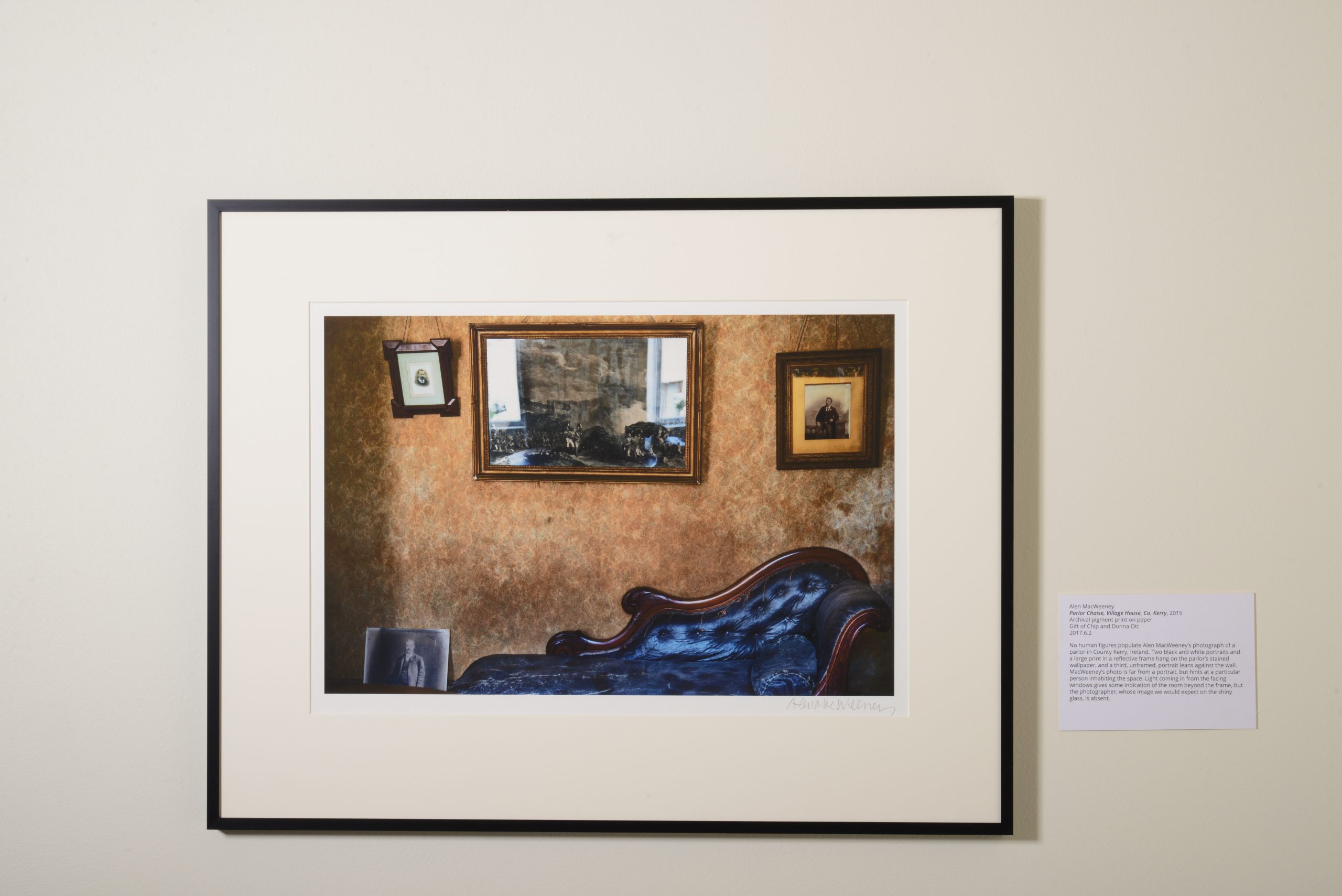
Robert Rauschenberg,
Autobiography (Panel 2), 1968,
Offset Lithograph on paper,
Gift of Barbara and Eugene Schwartz,
1986.11.22
Autobiography (Panel 2) is part an oversized triptych; the three monumental panels recount the artist’s life in text and image. Rauschenberg relies on key moments, which he marks with place names and dates that swirl out from the center of the panel. At the center of the panel, a family photo taken when Rauschenberg was young solidifies the connection between the string of text and the artist’s narrative of his past. Here the artist presents these moments as constitutive of his selfhood; his past, and not his portrait, allow him to express his identity.
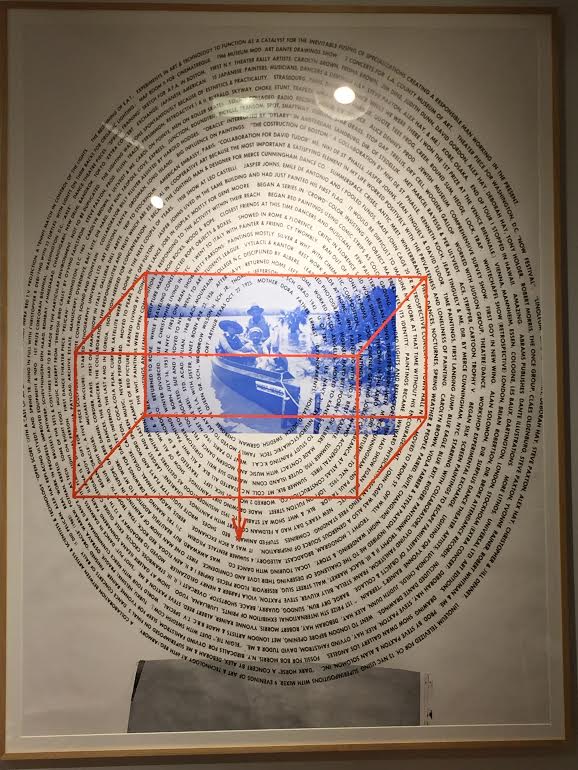
Roger Brown,
Così Fan Tutte, 1979,
Lithograph on paper,
University Purchase,
2007.44
Another figure closely associated with the Chicago Imagists, Roger Brown combined elements drawn from Italian Renaissance painting with surreal blocks of color and anonymous figures. The title of this print references Mozart’s opera. Here Brown sets expressive silhouettes against an abstract blue background; the gradient effect of the background looks like clouds or perhaps the folds of a curtain behind a stage. Brown does not show the facial features of the detailed clothing of opera singers. The silhouettes alone suggest a complex relationship between the figures with the scene, but also between the performers and the stage.

Installation Images:

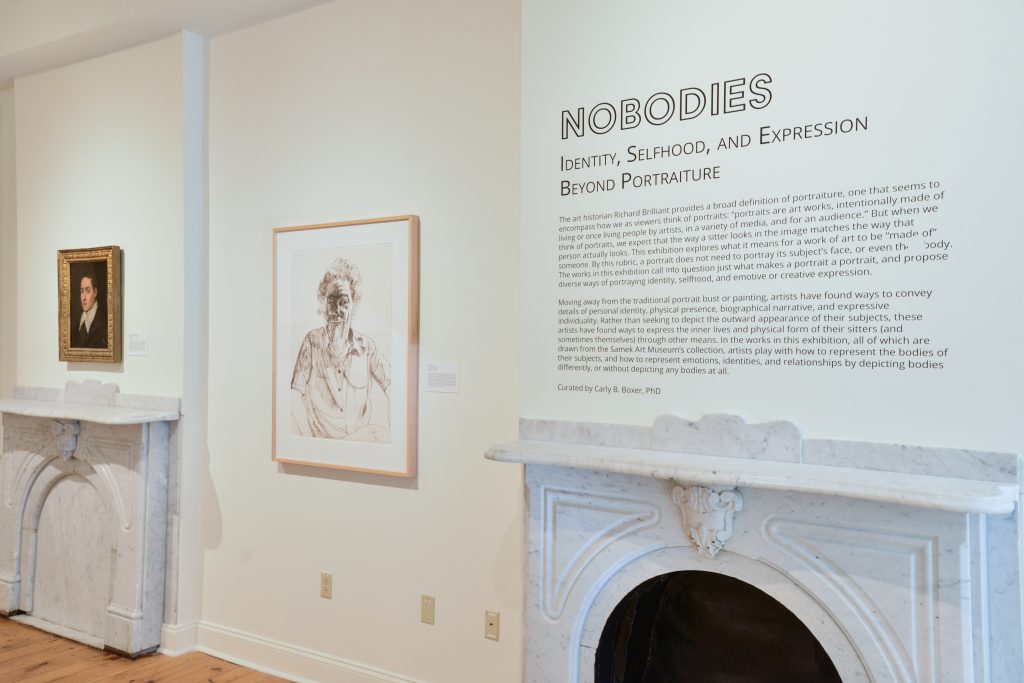
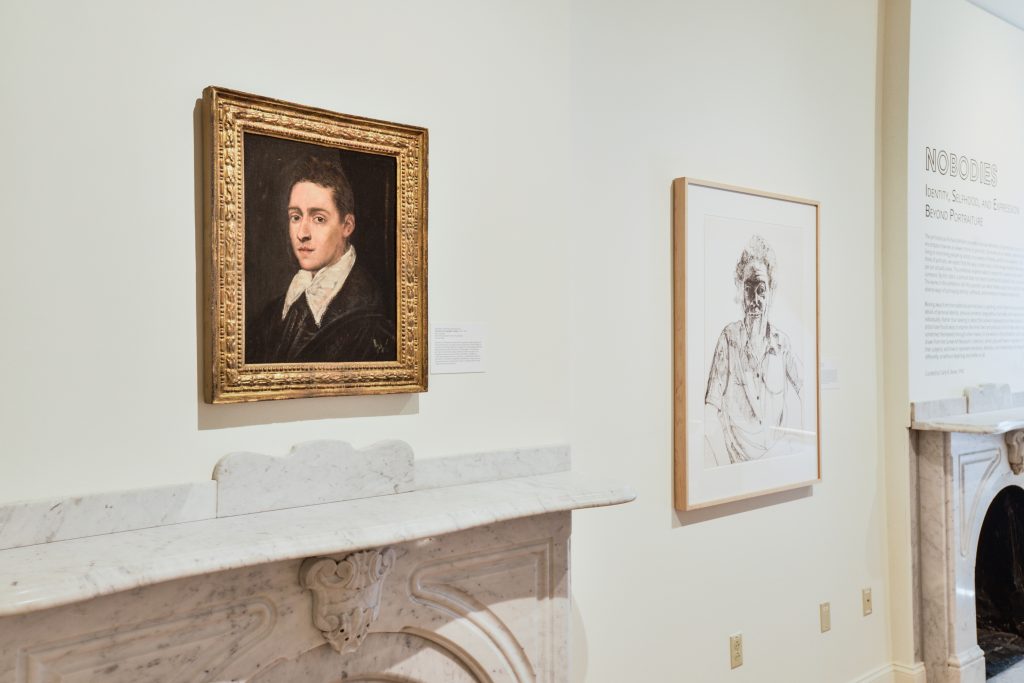
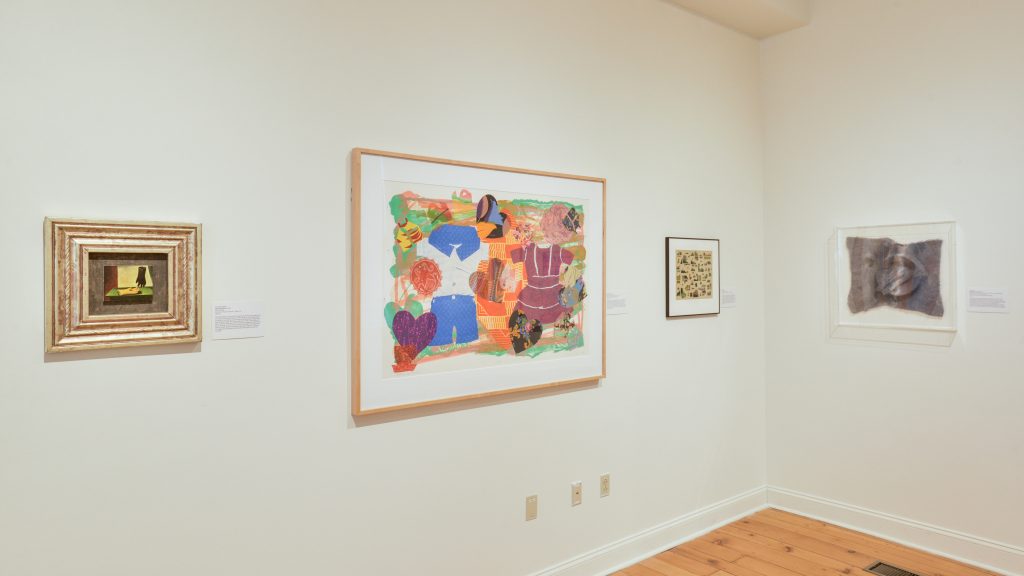
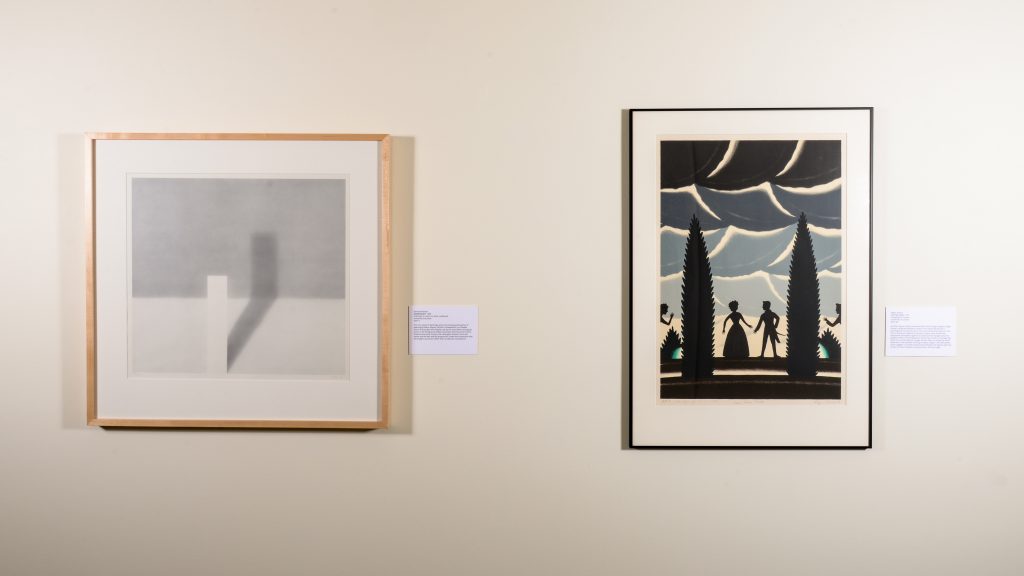
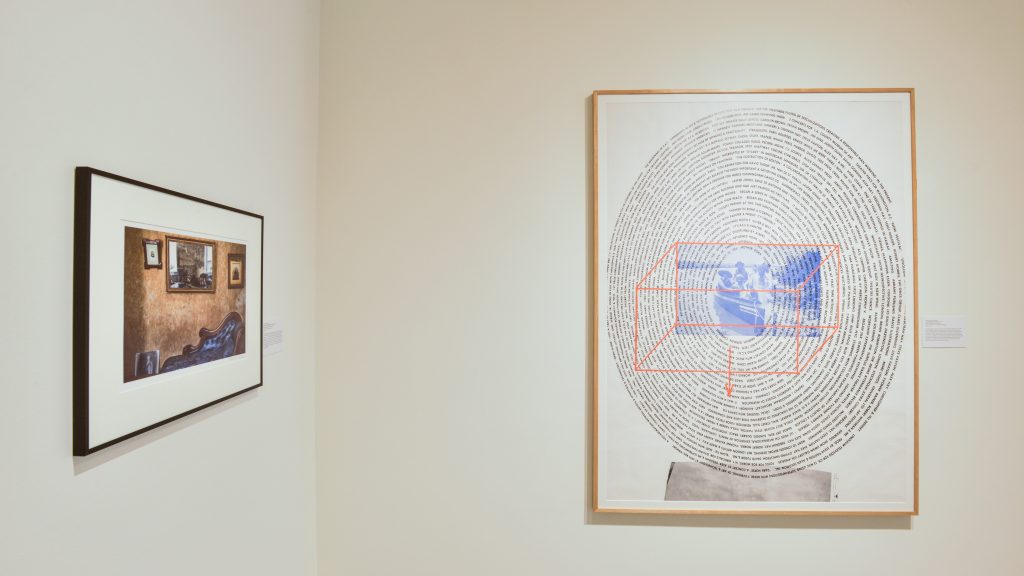
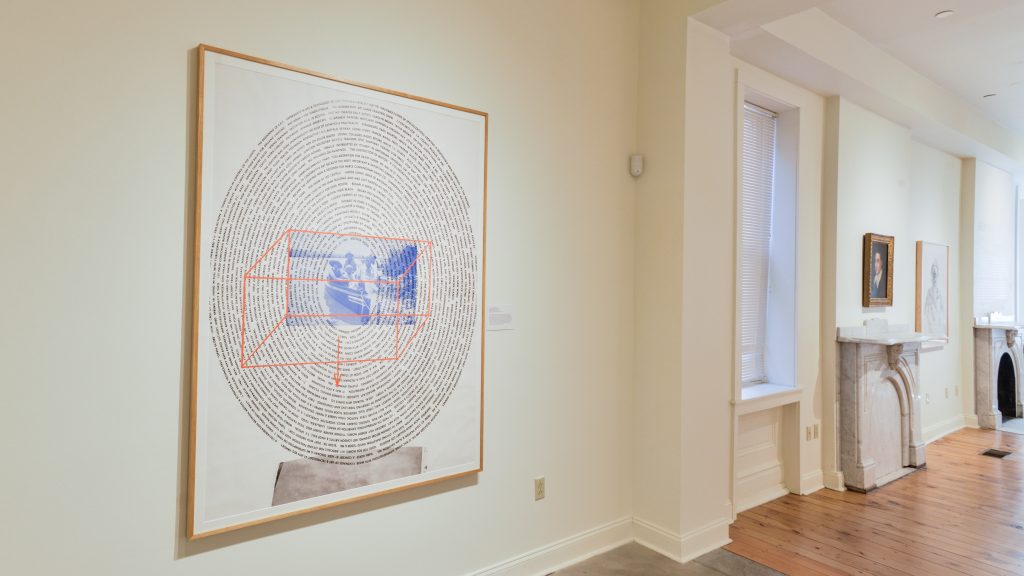

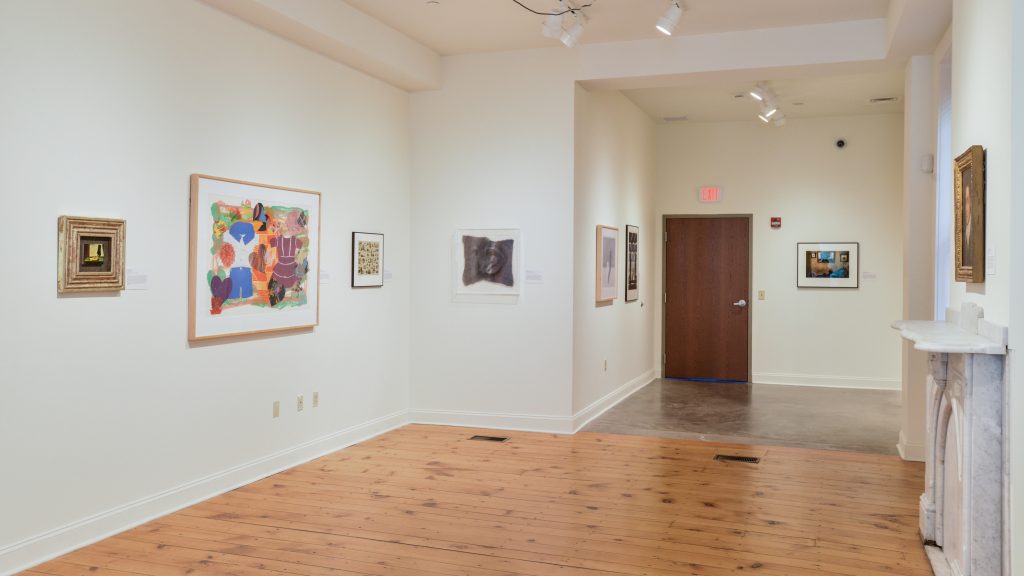
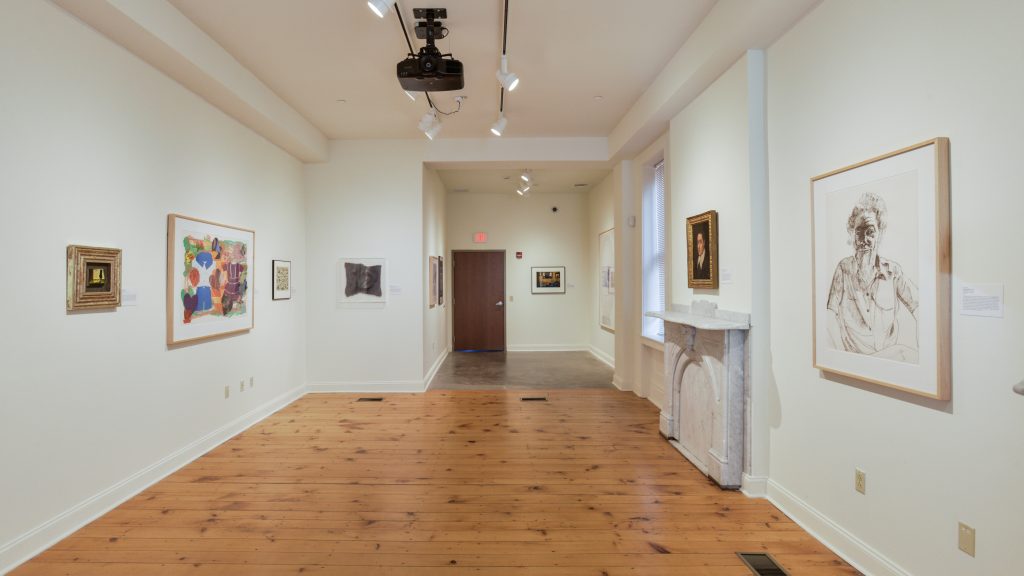
Top image credit: Roger Brown, Così Fan Tutte, 1979, Lithograph on paper

